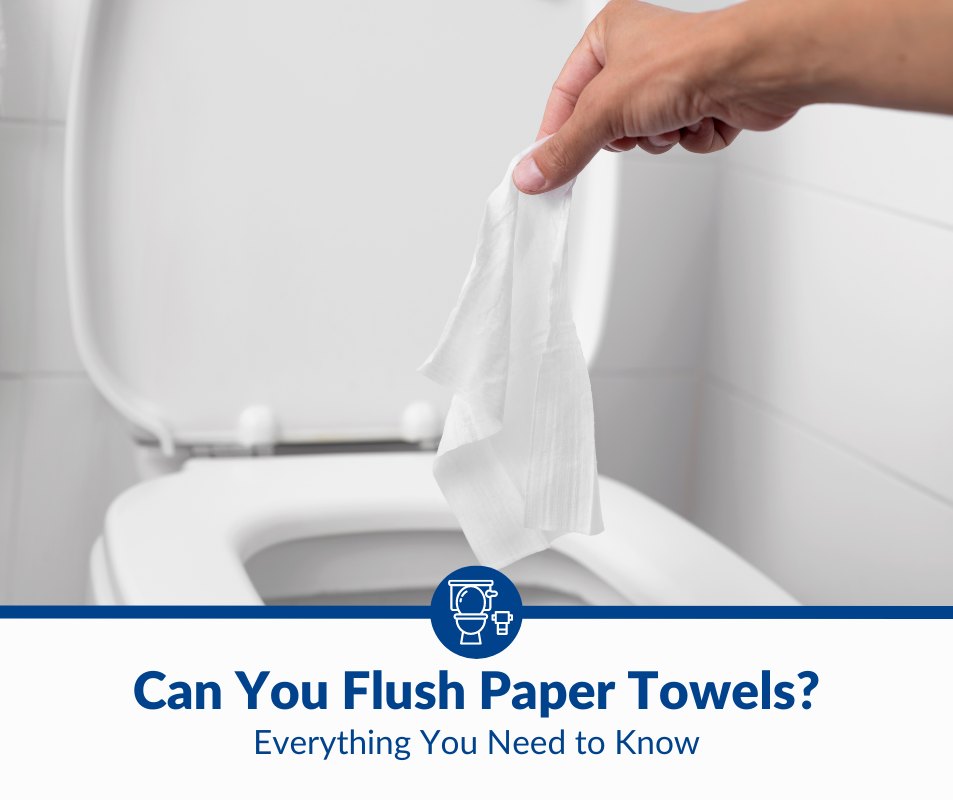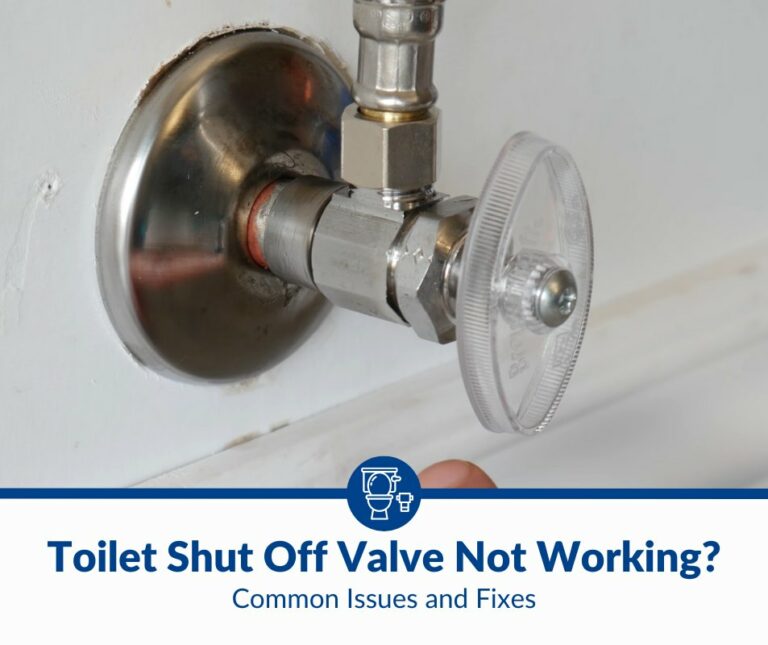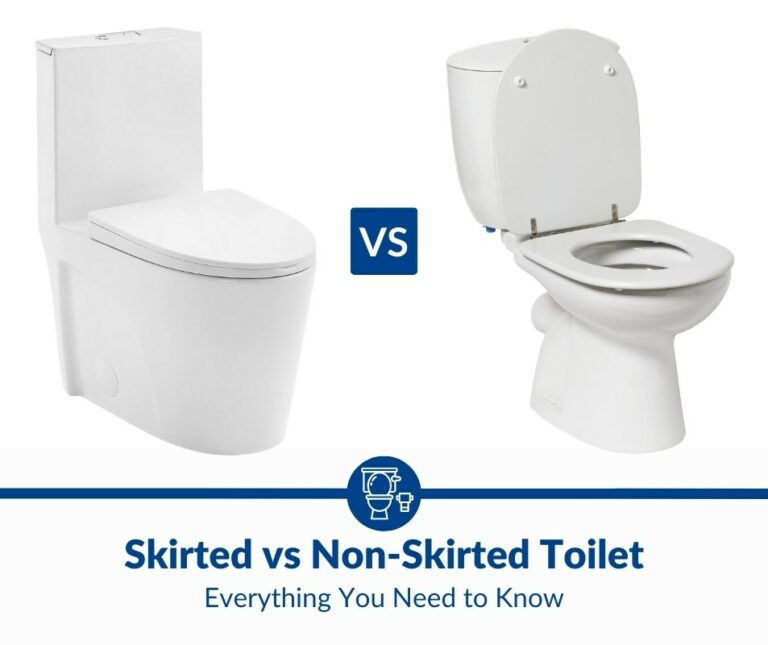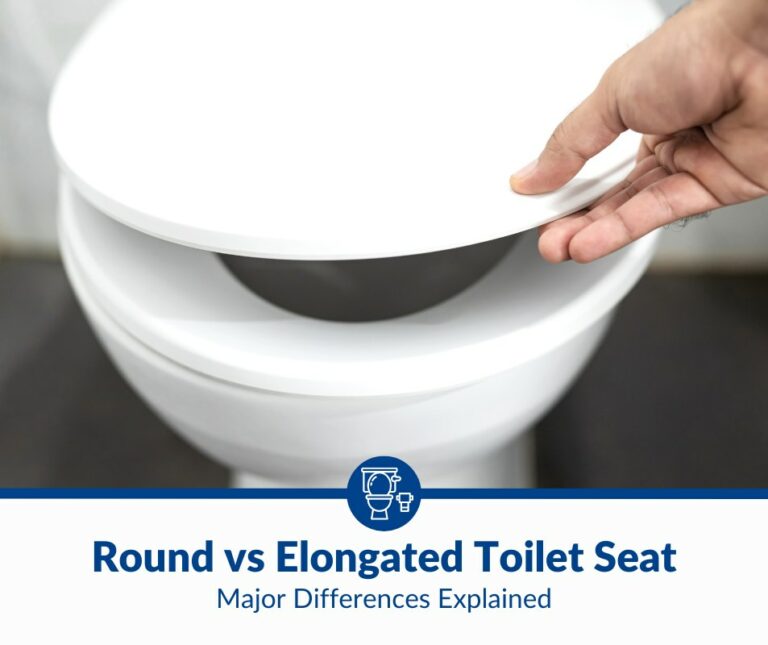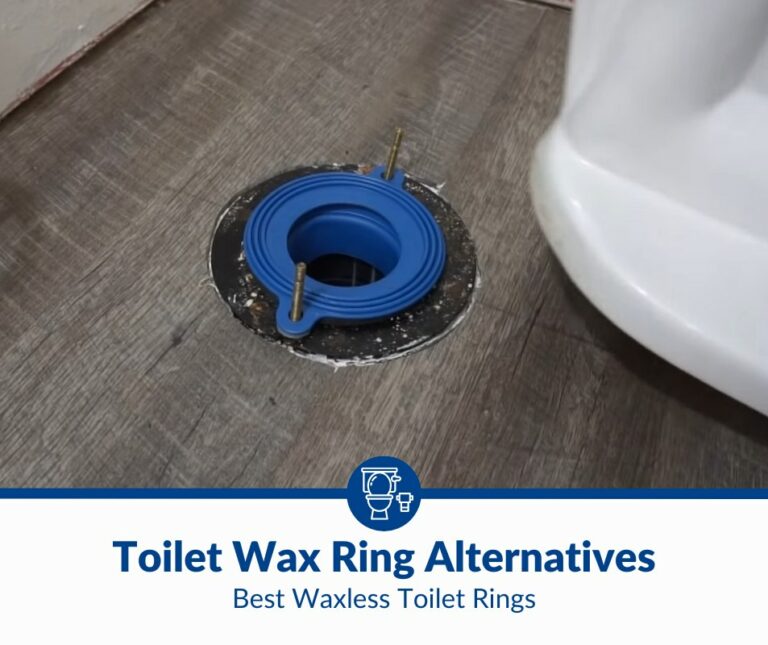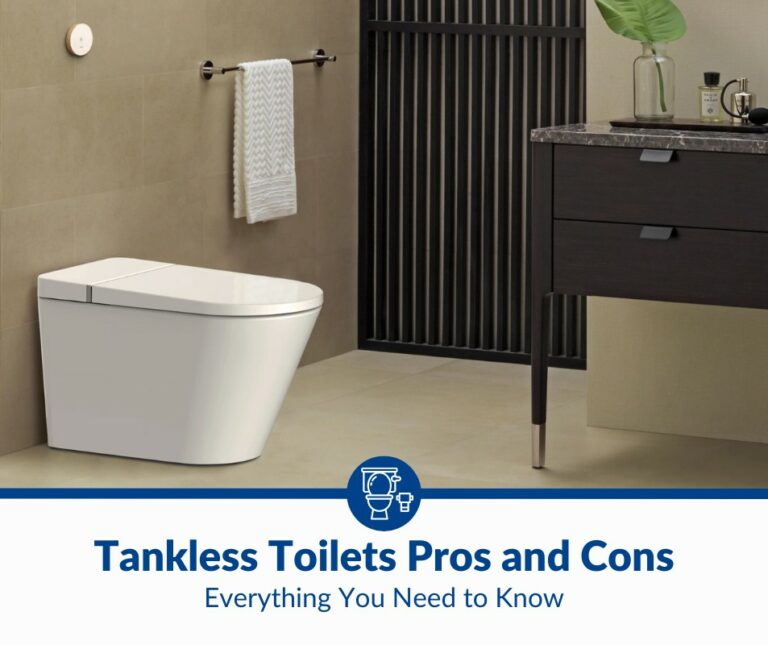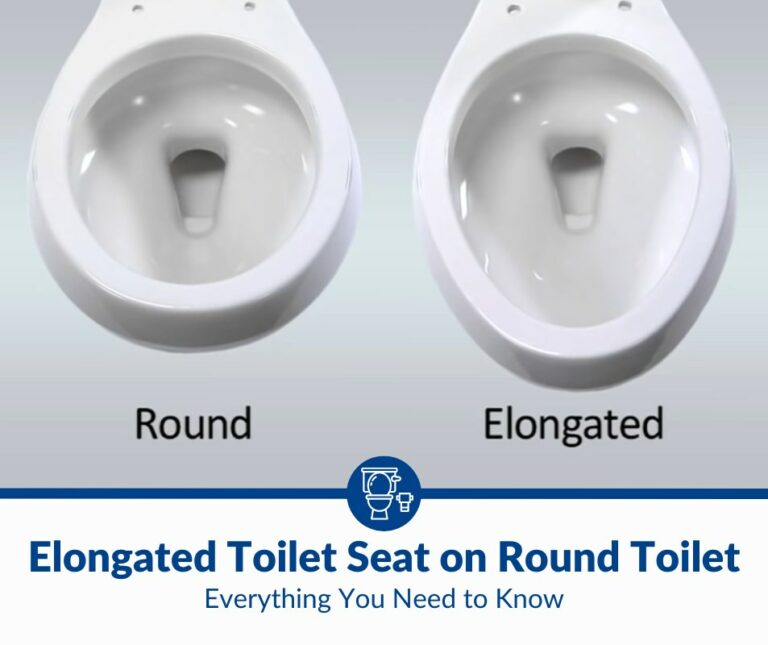Can You Flush Paper Towels Down the Toilet? Everything You Need to Know
Paper towels may look quite similar to toilet paper, but the two are actually quite different in physical makeup and their intended purpose. Unfortunately, due to the similarities, many people believe they can flush paper towels without incident, but this isn’t true.
You cannot flush paper towels, as they’re not sewer or septic-safe. Paper towels can become stuck in the toilet, trap, or main sewer drain or even cause problems at the water treatment facility or in a septic tank. This can cause costly repairs. You should only flush urine, feces, and toilet paper.
In this article, you’ll learn what happens when you flush paper towels down the toilet and how they travel throughout a plumbing system. You’ll also learn why it’s not a good idea to flush paper products and how they wreak havoc on pipes and septic tanks. Finally, we’ll explain what to do if you flush paper towels and experience problems, so read on to learn more.
What Happens When You Flush Paper Towels?
Chances are, you’ve flushed a paper towel or two in your lifetime without thinking twice. Although it may not seem like a big deal when nothing happens, it’s not a good idea to make it a common theme.
After flushing a paper towel down the toilet, the system utilizes water, pressure, and gravity to push the product down the hole that you see in your toilet. If the pressure and gravity aren’t enough to pull the bulky paper towel down into the system, you may experience issues right away. The toilet may clog and begin to overflow.
As mentioned, however, there are some cases when a toilet flushes without a problem. However, that doesn’t mean you’re in the clear just yet. All products flushed down the toilet still have quite the journey.
Entering the Toilet Trap
Once the water is no longer visible in the toilet, the paper towel enters the toilet trap. This is the pipe that sits directly below the toilet bowl. It is an S- or P-shaped pipe, which helps it hold a small amount of water to prevent sewer odors from entering the home.
As the paper towel enters the trap, it could still become stuck in this area, as it’s thicker and heavier than regular toilet tissue. It’s fairly common for bulky items (even large amounts of toilet paper) to become lodged in the toilet trap, causing the water to overflow as the backup prevents it from going down the drain.
If the toilet paper moves through the trap and into the main drain without incident, consider yourself lucky — for now. It’s still important to keep an eye out for any potential plumbing problems over the next couple of hours. It may even be possible to experience problems in the coming days if the paper towel ends up entangled in other debris in the main line.
The Main Sewer Drain
After exiting the toilet trap, the paper towel travels further down the drain and through a series of pipes. These pipes eventually carry the paper towel to the main sewer drain. Here, there’s still a chance the paper towel could cause a clog. This may happen if the paper towel catches on tree roots that have grown through the pipes, or on other clogs that have built up over time. If a large clog forms in the main drain of your plumbing system, it can cause backups in the home.
Backups could lead to wastewater pooling in your basement or bathtub or even cause toilets to back up and cause carpet or floor damage.
Wastewater Treatment Facility or Septic Tank
When the paper towel finally leaves the main drain, it enters the sewer line and travels on its way to a wastewater treatment facility or the septic tank. By this point, you’re likely in the clear if you haven’t experienced any plumbing problems. However, you should still stop flushing paper towels because it can still be causing problems at the wastewater facility or within the septic system (if you have an individual on-site wastewater treatment).
Wastewater Treatment Facility Problems
Wastewater treatment facilities have water recovery centers where they collect wastewater from the city or county. In the first step of water treatment, they remove large solids from the water. These systems are only designed to remove feces and toilet tissue; they aren’t designed to remove bulkier items. As such, paper towels and other items can damage the machinery or even slow down the entire water treatment process.
After removing the thick sludge of solids, smaller particles are removed through additional processes. Eventually, the water is cleaned and disinfected before it is released back into the environment.
To showcase just how damaging and costly it can be to flush random solids down the toilet, take a look at this case: In 2018, Macomb County Michigan, city workers performing routine maintenance and cleaning of their sewer lines came across a massive build-up of solids. The “fatberg,” as they called it, consisted of feces, oils, feminine hygiene products, and baby wipes. It was over 100 feet (30.48 m) long and cost over $100,000 (€93,775) to remove.
Septic System Problems
Like sewer systems, septic systems can also experience issues from flushing paper towels. These individual wastewater systems utilize septic tanks that use biological processes to break down waste before releasing it back into the surrounding soil.
The system works because the heaviest waste sinks to the bottom of the tank, whereas a scum layer forms at the top. This top layer contains oils, fats, grease, and other “floatables.” In the middle layer of a septic tank, there is water that leaches into a drain field nearby. As the water soaks through the drain field, it is naturally filtered through the rocks and soil.
Unfortunately, paper towels can severely damage a septic system and hinder this process. Since paper towels don’t break down on contact with water, they can easily become entangled in roots or even the sewage pump, preventing water from being pushed through the system. They may also sit inside of the system for long periods without breaking down, adding to the organic load. This puts the system off-balance and may result in ineffective treatment.
Why Can’t You Flush Paper Towels?
The primary reason why you can’t flush paper towels is because of the difference between paper towels and toilet paper. These two paper products are manufactured differently because they’re designed to serve different purposes.
Paper towels typically consist of long woven softwood fibers that use creping and chemical pulps to create a durable product. The wet strength of paper towels is much greater than that of toilet paper, as their intended purpose is to wipe up spills and other messes. Therefore, they must absorb water while retaining their strength in the process. Paper towels are also generally thicker than toilet paper.
Paper towels are designed for cleaning. As such, they hold together longer even when exposed to chemicals and can withstand scrubbing and other forms of abuse. The reason paper towels can withstand this type of force is because of the pressing and drying process. It creates a rough, irregular surface which is more abrasive than toilet paper while also enhancing moisture retention.
If you flush paper towels, you run the risk of clogging your toilet and your pipes or even damaging the municipal sewage system or your septic tank.
Toilet paper, on the other hand, is thinner than most paper towels. It’s specifically designed to begin disintegrating as soon as it’s exposed to water. You can test this by wetting a sheet of toilet paper and attempting to wipe down a surface — it will instantly shred into pieces.
Toilet tissue consists of short fibers sourced from hardwood pulp and recycled fibers. These fibers are much less durable than woven softwood used in paper towels. The paper loses a substantial amount of strength when wet. As soon as it hits the water, it breaks down, making it safe for sewer and septic systems.
Designed for use on the skin, toilet paper is also softer than paper towels. It tends to be thinner, so it can easily conform to the folds of the skin, too. Even two-ply toilet paper is thinner than most single-ply paper towels. You’ll also notice that the pieces of toilet paper are easy to peel apart, which also contributes to easier breakdown.
Feel the Difference Between Toilet Paper and Paper Towels
You can feel the difference between toilet paper and paper towels. By rubbing your finger across a sheet of each, you can feel the softness, density, embossing, and rigidity of each. When you pick them up, take note of the density and weight of each.
If you attempt to tear each sheet of paper, you’ll also notice that it takes much less force to tear the toilet paper versus the paper towel. Add a drop of water, and it becomes significantly easier to shred the toilet tissue.
What About Thick Toilet Paper?
There are dozens of thick toilet paper brands on the market today that feature thicker, more durable paper with embossed patterns and woven fabrics. While these brands claim the products are sewer and septic-safe, it’s important to remember that thick toilet paper brands can also wreak havoc on plumbing in much the same way as paper towels.
Use thick toilet tissue conservatively, as they don’t break down as quickly as the thinner brands do. If you’re adamant about using a softer product, consider investing in soft cloths that you can wash in the washing machine and reuse. It saves money in the long run, is better for the environment, and could prevent costly plumbing repairs.
Other Products To Avoid Flushing
In addition to paper towels, other products you shouldn’t flush include:
- Feminine hygiene products
- Cotton balls, cotton swabs, or cotton pads
- Diapers
- Wipes (even “flushable” brands)
- Dental floss
- Hair
- Kitchen grease or oils
The only things you should be flushing down your toilet are feces, urine, and toilet tissue.
What To Do if You Flush Paper Towels
If you’ve accidentally flushed a single paper towel and haven’t experienced any overflows or backups in a day or so, you’re probably in the clear. However, if you’ve flushed multiple paper towels over a day or more, you should watch for any signs of a clog or backup — and stop flushing paper towels immediately. The more paper towels you send down the drain, the more you increase the chances of ending up with a costly plumbing problem.
Here, we’ll cover three plumbing problems you may come across after flushing paper towels and what you can do to help fix them.
When the Toilet Overflows
After flushing a paper towel down the toilet, you may find that the toilet immediately begins to overflow. If you can still see the paper towel in the toilet bowl, you may be able to put on a glove and pull it out of the toilet manually to stop the toilet water from rising.
If you cannot see the paper towel in the toilet, chances are that the paper towel is stuck in the trap or somewhere in the drain line. You can use a plunger to try and loosen the paper towel if it’s still in the trap. While this may help the water go down, it doesn’t guarantee that the clog has been completely cleared. It’s possible the paper towel just moved a little further down the line, so keep watching out for issues.
When the Toilet Is Slow To Flush
A toilet that’s slow to flush means that some water is getting through, but there’s a blockage somewhere that’s making things slow to drain. You can first try using a plunger to loosen the paper towel and move it further down the line.
If the plunger doesn’t remedy the issue, use a toilet auger. These devices usually provide up to six feet of cleaning cable to remove blockages from the toilet. It can help break up the paper towel, as long as it’s in the bowl and not in the main line. If the blockage is further down, you may need to reach out to a plumber. Plumbers have access to commercial augers, which extend even further into the main drain, all the way out into the sewer line.
When Water Backs Up in the Bathtub or Lowest Drain
After flushing your toilet, running your washing machine, or even using water in your sink, you may notice water bubbling up in your bathtub or the lowest drain in your home. This is a tell-tale sign that there’s a blockage in the main sewer line of the home.
You cannot remedy these on your own unless you have a commercial auger and a clean-out. In most cases, you’ll need to call a plumber to come clean out your main line.
Say No To Flushing Paper Towels – Try These Alternatives
Based on what this article has outlined so far, flushing paper towels causes more problems than it’s worth. However, some people still prefer using paper towels in the bathroom, for whatever reason. If you must use paper towels, do not flush them!
Instead, throw the soiled paper towels into the garbage bin. If putting soiled paper products into the trash isn’t something you want to do, invest in a sealed disposal system to store your toilet paper alternatives until the waste is full enough to move to your outdoor trash bin. These sealed systems prevent odors and keep things out of sight and contained in a more sanitary way.
On the other hand, consider investing in paper towel alternatives. Some alternatives include a bidet toilet seat or bidet attachment. While bidet toilets are expensive, the seats and attachments are available at most hardware stores for less than $100. They can be installed in less than an hour and hook up directly to your home’s water line. These are one of the easiest ways to get the ultimate clean after using the bathroom. Some even have drying options!
Soft cloths are another investment that can replace paper towels. Cloths reduce your impact on the environment by reducing the amount of paper products you use. Also, you’ll avoid damaging your plumbing system, so it’s a win-win. They’re reusable, and you don’t need to wash them all at once. You can store them all in a sealed system, except, in this case, you’d use the system more like a hamper versus a disposal bin.
Conclusion
Overall, paper towels are a massive clog risk when it comes to plumbing. They’re designed primarily for cleaning kitchen messes, and are to be disposed of in a garbage bin. Companies never intended these products to be flushed down the drain.
Modern toilets, sewer systems, and septic systems are designed to handle water, urine, feces, and toilet tissue only. They’re not equipped to handle paper towels or other solids, as these items can end up damaging the systems, leading to costly repairs. So, in the future, vow to stop flushing paper towels and instead, opt for the alternatives.

